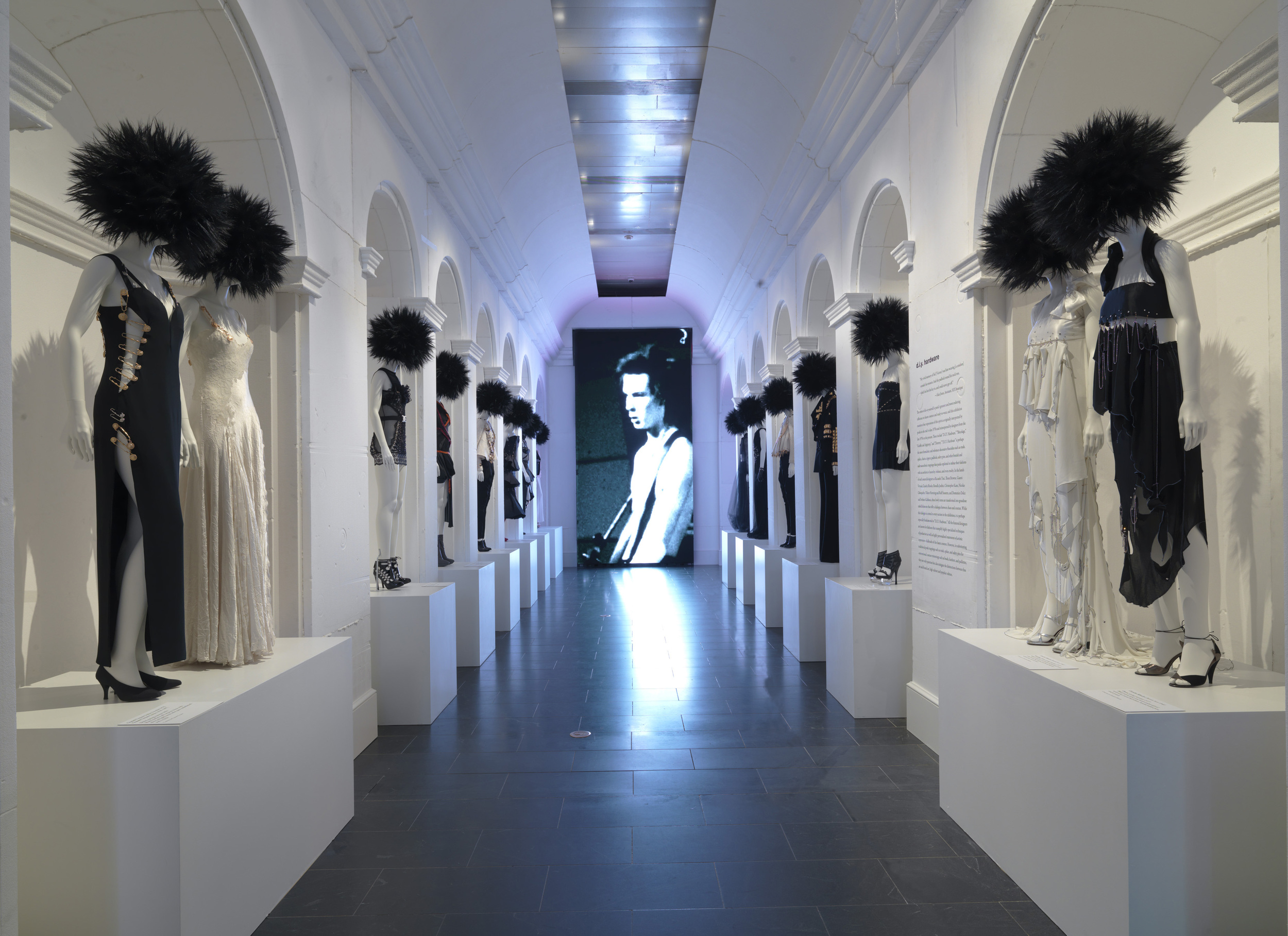A Review of "Punk: Chaos to Couture"
/by Jay Ruttenberg Gallery View, D.I.Y.: Hardware
Gallery View, D.I.Y.: Hardware
Punk fashion, in its purest form, is a gawky Jew from Queens, resplendent in old jeans, snug shirt, long hair, and a chintzy black leather jacket that, depending on the viewer’s perspective, either masks or accentuates the wearer’s geekiness. Anything beyond this uniform—the safety pins, studs, or those storied Mohawks—has always seemed an affront to the music’s minimalism. Worse, it is cheesy.
Or maybe not. Whereas in New York, punk was a witty music and art movement, in London, it quickly became a deathly serious fashion and media one. The Ramones gave their first concerts at a 23rd Street loft and a not-yet-famous Bowery dive bar; the Sex Pistols began their stage life at Central Saint Martins College, the London fashion hub. Hence, despite existing in the city that both birthed and perfected punk, the Metropolitan Museum of Art’s “Punk: Chaos to Couture” exhibition feels much more a piece of London than of New York. This is probably for the best: London punk never offered a rival to Joey Ramone’s pop persona or Tom Verlaine’s musicality—but then, New York did not produce image svengalis in league with Malcolm McLaren and Vivienne Westwood.
Refreshingly, the Costume Institute’s exhibition, curated by Andrew Bolton, devotes itself almost wholeheartedly to the fashion inspired by punk, predominantly womenswear made in the music’s wake. It never attempts comprehensiveness and avoids Hard Rock Café-isms. (Best to ignore the show’s biggest misstep: a dead-on-arrival, by-now-obligatory recreation of CBGB’s bathroom.) Excepting a room devoted to Westwood’s work—the sloganeering t-shirts of old circling the fancier items that followed—most pieces are from designers not typically associated with punk rock: Karl Lagerfeld, Miuccia Prada, Martin Margiela, Alexander McQueen…. Those punk aesthetes kvetching that the mere existence of this show somehow contradicts the music’s mission are missing the point (or, more likely, confusing the exhibition with Anna Wintour’s tone-deaf party). “Chaos to Couture” seeks to celebrate, not dabble in, cultural tourism. It is not about punk, but about fashion’s belated response to punk.
 Gallery View, D.I.Y.: Graffiti & Agitprop
Gallery View, D.I.Y.: Graffiti & Agitprop
Rooms are divided by influence and material. “D.I.Y.: Hardware” represents the sordid mark of S&M, with gratuitous zippers, ominous padlocks, and other metals—bondage gear for the wealthy, basically. A snippet of the New York Dolls’s “Trash” spins in “D.I.Y.: Bricolage,” a room devoted to customization and recycled materials (i.e., a Margiela ensemble featuring foil and metal staples). The exhibition concludes with “D.I.Y.: Graffiti and Agitpop,” with the Clash as muse, and “D.I.Y.: Destroy,” which is inspired by Johnny Rotten and his awing collection of shredded grandma sweaters. For a viewer such as myself, far more schooled in songs than in garments, exploring how the genre eventually trickled into high fashion is eye-opening. In music, the best punk-influenced bands have always been those that channel elements of the genre into unexpected sounds (say, Beat Happening) rather than those producing mere facsimile. Ditto the more interesting clothing: McQueen’s skull and crossbones or a hokey Elvira get-up from Versace seem rote compared to, say, Moschino’s skirt of white plastic shopping bags, whose playfulness might have been appreciated by X-Ray Spex. A series of puffy cream Comme des Garçons dresses, at the show’s finale, reference the layers favored by punk kids only upon a second or third glance. The effect is striking.
As exemplified by that CB’s bathroom—and will some brave soul please take the Met’s bait and use the toilet?—the exhibition stumbles as it gets cute and veers away from fashion. The museum’s decision to identify famed designers laboring under multinational corporations as “D.I.Y.” is laughable. At times, the exhibition tries too hard to create a punkish aura—the “Graffiti and Agitpop” room resembles the menacing punk rock of a Hollywood backlot. And while it is impossible to be discontent while hearing “Blank Generation,” particularly along Fifth Avenue, the inclusion of background music diminishes the clothing it sets out to contextualize.
How this exhibition is received by New Yorkers remains to be seen. The show has yet to open, and already it has given us the cringe-worthy spectacle of insecure celebrities struggling to add hints of leather or metal to their wardrobes in order to qualify as “punk” for the Costume Gala. Perhaps such behavior flies in London; in New York…yeesh! It’s embarrassing just to think about it. For Chrissake, a punk wears what a punk wears.
A recovering rock critic, Jay Ruttenberg is editor of The Lowbrow Reader and its book, The Lowbrow Reader Reader. His work has appeared in The New York Times, Spin, and Details.





